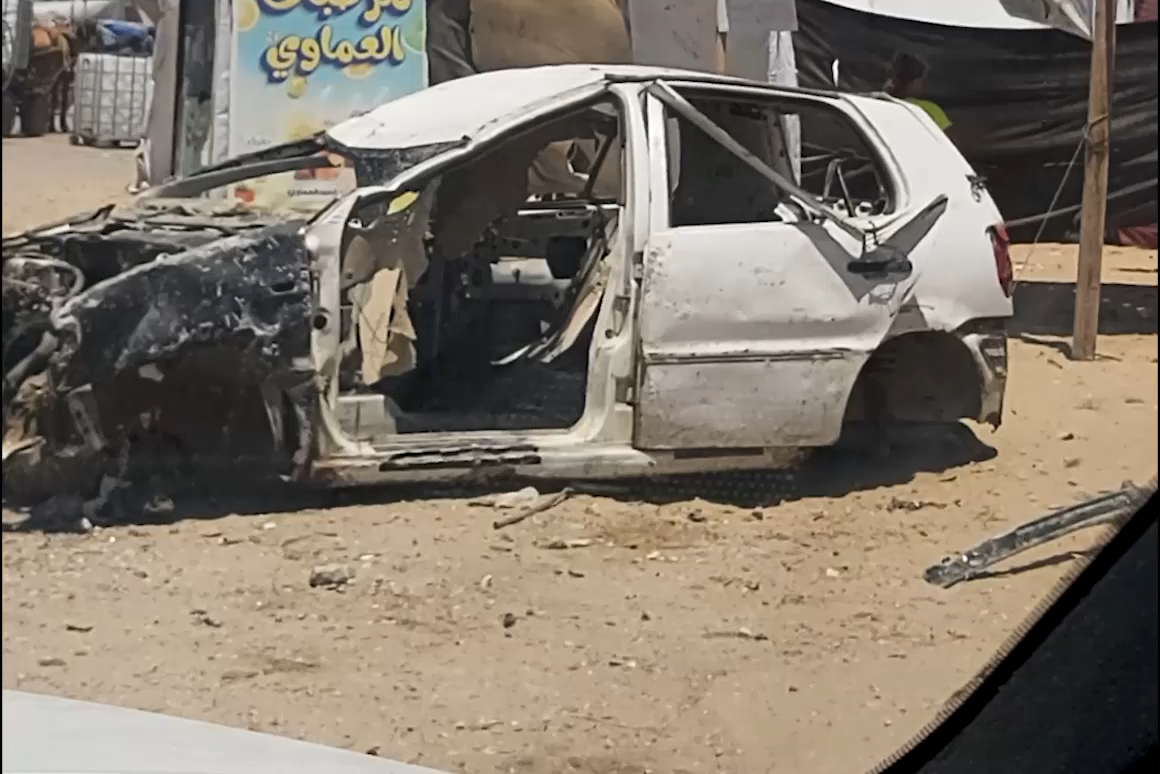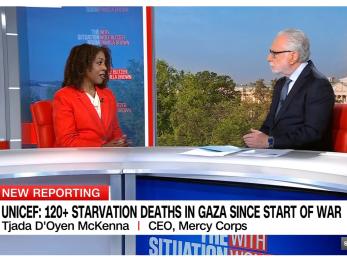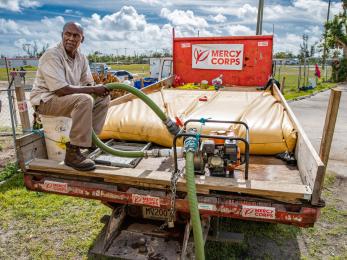Creating a family emergency preparedness plan
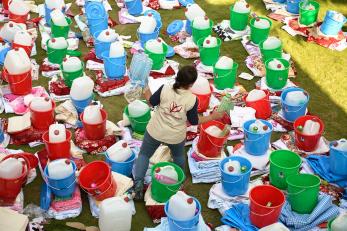
Preparing for emergency situations can be overwhelming — but it’s also an important way to protect yourself and your family. When you know about the risks and hazards in your area, you can plan for them with awareness and forethought and have the appropriate supplies ready if and when they happen.
Recognized as a leader in delivering rapid, lifesaving aid to hard-hit communities, we have responded to numerous disasters, including the 2018 earthquake and tsunami in Indonesia, Hurricane Maria in Puerto Rico, the 2017 Horn of Africa drought and hunger crisis, and the 2015 Nepal earthquakes.
We know firsthand that emergencies can change everything in an instant.
In case of a serious emergency, emergency responders will be overwhelmed and unable to help for some time — possibly weeks. Your neighborhood may find itself stranded and isolated by fallen infrastructure. Those who aren’t prepared will face a harder time and could be a liability to neighbors.
This guide can help you prepare for many of the kinds of emergencies we respond to: power outages, violent storms, flooding, hurricanes, earthquakes, and more.
Building a communication and action plan
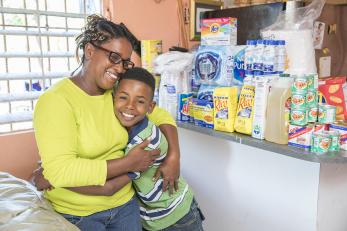
Preparing for an emergency is about more than assembling supplies. One of the most important steps is making a plan with your family.
You’ll want to communicate with your loved ones so everyone knows what each person is going to do in the event of an emergency.
Everyone should know where your family will meet. Most people choose their home as their primary meeting place. You should also have a second place in mind as an alternate. It’s possible homes won’t be safe to enter. The area around your home may not be safe due to fire, poor air quality, or other hazards.
Consider the following. Where will you go immediately if the emergency:
- Happens at home
- Happens while you are at work and the kids are at school
- Happens while you’re running errands
- Happens while you’re commuting
It’s also important to plan what you’ll do if members of your family are in different places when the earthquake hits:
- Where will you meet each other?
- Who will be in charge of picking up your kids from school?
- Who is your emergency contact outside of your immediate location?
Make sure everyone in your family is aware of the plan, including where children should go and who will pick them up. Print copies and place them in your most frequented locations.
For the days after the disaster, you will also want to consider:
- Where will you go if your home is no longer habitable?
- Where are your important documents and contact information?
- How will you evacuate, if needed?
Making a family plan and practicing it doesn’t have to be scary. You can make it a fun family event. This kind of practice is important because it gives your family the muscle-memory they need to be prepared in a variety of contexts. They might feel confident doing drills at school, but what about at home?
None of these preparedness actions cost money. The main cost is your time. This kind of planning is important not just for a big emergency, but also for more common emergencies, like home fires.
Stocking an emergency preparedness kit and emergency supplies
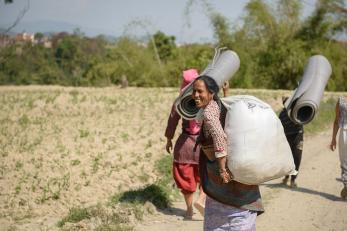
Emergency supplies are an essential part of a preparedness plan. You can assess your supply needs by thinking about where you spend extended periods of time. If you work outside the home, you might wish to have a home kit, a work kit, and even a commuting kit.
We recommend keeping your at-home emergency supplies together in a durable container with a lid. Organize your supplies in a safe and protected, easily-accessible area. Your kit should contain items to help you provide for your family for two weeks. Don’t “poach” supplies for other purposes, but do review them every six months, including expiration dates, to ensure safety.
You can keep an office go-bag under your desk at work. It should be something you can carry with you, containing items to help you survive, whether you’re trying to get home or staying where you are. Many people also keep a commuter kit in their cars, or in a bag they carry on transit or on their bikes.
As you assemble your emergency supplies, consider what items you may already have, such as camping gear, your kitchen pantry, or first aid supplies in your medicine cabinet. Just make sure you know where the necessary items are, and ask yourself, “Where are the gaps?”
Essential preparedness supplies are water, non-perishable food, and first aid. The following are considerations for the contents of your emergency kits.
- Water
- Non-perishable food
- First aid
- Prescription medicine
- To-go emergency kit list
- Legal documents
- Pet safety
Water
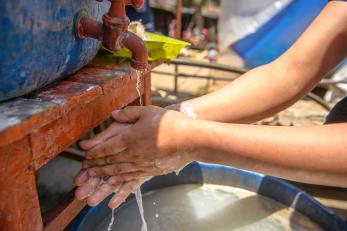
Water is the most essential element to survival, and a necessary item in every emergency kit. Following a disaster, clean drinking water may not be available. Your regular water source could be cut off or compromised through contamination.
In your home, plan to store at least one gallon of water per person per day for about 14 days. One gallon should cover drinking and sanitation. Children, nursing mothers and sick people may need more. A medical emergency might require even more.
You can purchase commercially bottled water for the safest and most reliable emergency water supply. Store your water in a cool, dark place. Keep bottled water in its original containers and do not open until you need to use it. Observe expiration dates. Replace your water supply about once every six months.
For to-go kits, consider using light-weight water packets or a water purifier to supplement small water bottles.
Non-perishable food
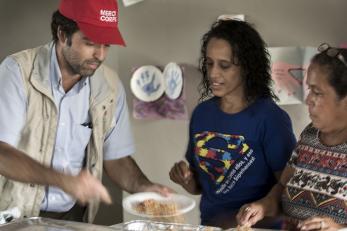
Buy food you’d normally eat. Store enough to last two weeks per person. Stock up on canned foods, packets, dry mixes and other staples for your home. Emergency foods should not require refrigeration, cooking, water or special preparation.
Remember any special dietary needs. Avoid foods that make you thirsty. Choose salt-free crackers, whole grain cereals and canned foods with high liquid content. Here are some other food ideas:
- Ready-to-eat canned meats, fruits, vegetables
- Protein or fruit bars
- Dry cereal or granola
- Powdered milk
- Peanut butter
- Dried fruit and nuts
- Crackers
- Canned juices
- Food for infants and children
- Spices
Don’t forget utensils, plates, cups and a can opener!
A note about cooking without power: alternative cooking sources may be used in an emergency, such as chafing dishes, fondue pots and camping stoves. Depending on the severity of the emergency, your gas grill might be available. Remember to follow safety procedures, and never barbecue indoors.
If you’re cooking canned food with an alternative cooking source, remember to remove the label, thoroughly wash the can and open it before heating.
First aid
Your first aid supplies should be capable of dealing with moderate injuries, if possible. You might want to have enough supplies to treat multiple people.
Ideally, your first aid supplies would include:
- Dressings
- Bandages
- Burn gel
- Splints
- Antiseptic
Since disaster responders may not be available, you may need to be able to treat more than the common cuts, scrapes and burns.
Prescription medicine
Talk with your doctor about how to make sure you have enough prescription medications for at least a month, if possible. Keep your prescriptions current. Your doctor may be willing to write you an extra prescription for a disaster kit. Also keep in mind prescription expiration dates.
At the very least, make sure any necessary medications are easy to locate and grab in case of a sudden evacuation.
To-go emergency kit list
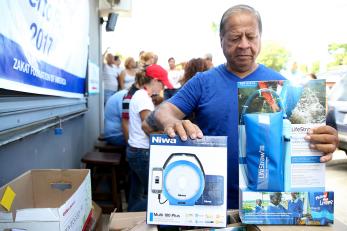
Keep a to-go kit in a backpack or satchel near an exit. Your to-go kit may also be used if you are at home. These are some items you might want to include:
- Additional water packets, bottled water, or water purifiers
- Non-perishable, easy-to-carry food, such as meat packets, protein and fruit bars
- A mess kit with utensils, plate, cup and a can-opener
- Necessary medications, vitamins and first-aid supplies
- Prescription glasses and sunglasses
- Cash
- Pens & notebook
- Battery-powered or hand-crank radio
- Flashlight
- Batteries
- Solar phone-charger; car-battery phone charger
- Whistle or alarm to signal for help
- Lighter, or matches in a waterproof container
- Feminine supplies
- Personal hygiene, including toothbrush, toothpaste
- Toilet-in-a-Bag
- Moist towelettes. Dental floss – it has many uses!
- Clothing, including changes in underwear, hat, gloves
- Pet supplies and food
- Legal documents
- Tools: wrench, pliers
- Dust mask to help filter contaminated air
- Sleeping bag, blanket, bedding
- Complete change of clothes including long-sleeved shirt, long pants, sturdy shoes
- Garbage bags
- A fun kit, including books, games, puzzles, cards, crayons, paper
Legal documents
To help you think about what documents you may need access to, FEMA provides a checklist on its website, called the Emergency Financial First Aid Kit (EFFAK).
At a minimum, you should consider having photocopies of:
- Identification, including birth certificates, social security card, citizenship papers
- Financial documents, including credit card and banking information
- Legal documents, including estate planning documents, property deeds, mortgage documentation, car titles
- Medical information, including health and life insurance policies, healthcare provider information
- Household contacts
Pet safety
Your pets will depend on you in case of a disaster, so think about them in advance.
The first step in a pet safety plan is to make sure your pets are properly identified. Does your pet have a license or ID tag? A microchip recommended by the ASPCA and can be read at most animal shelters.
Alternate care arrangements may be necessary for your pets. Arrange a safe haven: don’t leave your pets behind. Keep a list with several alternatives. Include phone numbers of alternate sites.
A designated caregiver is recommended in case an emergency occurs while pets are home alone. Perhaps you have a stay-at-home neighbor who is familiar and friendly with your pet. Do they have a key to access your home to provide care? You may wish to let them know what you’re thinking and provide orientation.
Include pet supplies in your family’s emergency kits, or make a specific kit for your pet. A good pet safety kit would be easy to carry, labeled, and easily accessible near a likely exit. Make sure everyone in your family knows where it is, including alternate caregivers.
What to include:
- About one ounce of bottled water per pound per day
- Canned or dry food to last a week or more. Remember to rotate food and water periodically.
- Can opener
- Serving knife
- Bowls with lids
- Pet carrier
- Label with your pet’s name and your contact information
- Cage liner
- Pet first-aid kit and guidebook
- Medications in waterproof container
- Photocopies of medical records
- Photocopies of vaccination records
- Recent photos of your pets
- List of feeding habits, medical concerns, and behavioral issues
- Disposable dog scoop bags or disposable litter trays. You can use soil or sand in place of litter.
- Disinfectant
- Grooming supplies
Preparing your home for an emergency
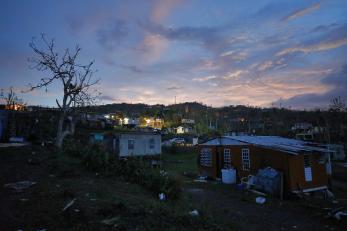
Beyond having your supplies ready at home, it’s also important to consider other areas that might be affected by a disaster.
Have alternative sanitation
During some emergencies, it’s unlikely that toilets will be operable. You can use the two-bucket method with camping toilet seats and sawdust for an alternate toilet, or purchase toilet-in-a-bag solutions to keep with your supplies.
Shut off utilities
Your utilities could be affected by some disaster situations. This is why you should know how to shut off your utilities — gas, water, and electricity. If you live in a house, make sure you and others in your household know how to do this.
Make sure you know where your home’s gas shut-off valve is. Keep a wrench by the gas valve so you will have it handy in an emergency.
If you’re in an apartment or condominium, make sure you know who would be in charge of this. It’s generally recommended that if you don’t smell gas, you don’t need to turn it off. But since we’ll have aftershocks and the situation may change, keep checking as long as it’s safe to do so. Apartment or condominium dwellers should manage gas systems for their own units only. DO NOT manipulate shared building systems.
Secure furniture
Secure tall or heavy furniture to walls to prevent it from falling during an earthquake. Falling furniture can cause injury or death, and can also block exit routes. Even without the threat of an earthquake, tall furniture should be secured for child safety. Tall appliances (refrigerators, washer/dryers) can also be secured to prevent movement during an earthquake. Furniture and appliances may be secured using furniture straps or other securing devices.
Insure your home
Only you can determine your risk tolerance and what kind of insurance coverage is right for you. Consult your insurance agent to determine what’s available to suit your needs.
How Mercy Corps responds to and prepares people for emergencies
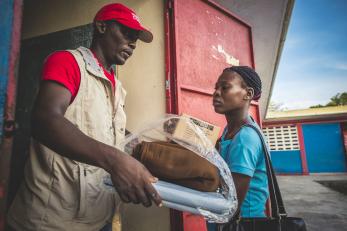
Around the world, 160 million people per year are affected by some type of natural disaster.
In these emergency situations, people need immediate access to food, water and other basic necessities. Once recovery begins, they often need access to jobs or other activities and functional markets where they can buy and sell goods.
We help provide both.
Our responses start with meeting the most urgent needs. Lack of clean water and poor sanitary conditions are a major threat to people in emergencies. We often provide water, sanitation and hygiene support, which helps save lives and preserve health.
When possible, we choose cash-based assistance in emergency response in order to empower people to buy what they need most. We also help ensure access to adequate and safe food, since that is one of the most critical needs in an emergency.
As time passes, we focus on helping people build resilience to future emergencies. Often, that means helping build back markets where people can buy and sell goods. We also explore how we can get people back to work.
